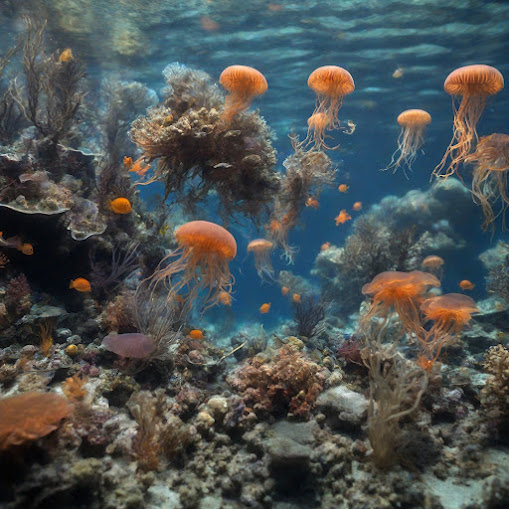Volcanoes
Earth's Fiery Giants
Volcanoes are some of
the most awe-inspiring and destructive forces on Earth. They can erupt with a
fury that can destroy entire communities and change the landscape forever. But
volcanoes are also essential to our planet's geological processes, and they
play a vital role in creating and shaping the land we live on.
In this article, we will
take a closer look at volcanoes and their role on Earth. We will discuss how
volcanoes are formed, the different types of eruptions, and the hazards that
volcanoes pose. We will also explore some of the latest scientific research on
volcanoes, and we will discuss what we can do to prepare for and mitigate the
risks posed by volcanic eruptions.
How
volcanoes are formed
Volcanoes are formed at
plate boundaries, where two tectonic plates meet. As the plates move, they can
collide, separate, or slide past each other. When plates collide, one plate may
be forced under the other. As the plate descends, it melts and forms magma. The
magma rises through the crust and erupts if it finds a weak spot.
Types
of volcanic eruptions
There are two main types
of volcanic eruptions: effusive eruptions and explosive eruptions. Effusive
eruptions produce lava flows, which are rivers of molten rock that can flow at
speeds of up to 40 miles per hour. Explosive eruptions produce ashfall,
pyroclastic flows, and lahars. Ashfall is a rain of fine particles of volcanic
ash that can blanket the ground for miles around. Pyroclastic flows are
fast-moving mixtures of hot gas and rock that can reach temperatures of up to
1,300 degrees Celsius. Lahars are mudflows that can be triggered by heavy rains
or melting snow on the flanks of a volcano.
Volcanic
hazards
Volcanic eruptions can
produce a variety of hazards, including:
- Lava flows: Lava flows can
destroy homes, infrastructure, and crops.
- Ashfall: Ashfall can damage
crops, pollute the air and water, and disrupt transportation.
- Pyroclastic flows: Pyroclastic
flows are extremely dangerous and can kill instantly.
- Lahars: Lahars can destroy homes,
infrastructure, and crops.
- Volcanic gases: Volcanic gases
can be toxic and can cause respiratory problems.
The
latest scientific research on volcanoes
Scientists are
constantly learning more about volcanoes. In recent years, they have developed
new techniques for monitoring volcanoes and predicting eruptions. They have
also made advances in understanding the underlying processes that drive
volcanic eruptions.
One of the most exciting
areas of research on volcanoes is the study of underwater volcanoes. Underwater
volcanoes are much more common than land volcanoes, but they are much more
difficult to study. In recent years, scientists have developed new technologies
that allow them to explore underwater volcanoes and learn more about how they
erupt.
Preparing
for and mitigating the risks posed by volcanic eruptions
There is no way to
completely prevent volcanic eruptions, but there are things that can be done to
prepare for and mitigate the risks. One of the most important things is to
develop early warning systems that can detect the signs of an impending
eruption. Early warning systems can give people time to evacuate and take other
precautions to protect themselves.
Another important step
is to develop mitigation strategies to reduce the damage caused by volcanic
eruptions. This could include things like building protective structures,
developing evacuation plans, and educating the public about the hazards posed
by volcanoes.
Volcanoes are powerful
and dangerous forces of nature, but we can protect ourselves from their dangers
by being prepared and knowledgeable. By understanding how volcanoes are formed,
the different types of eruptions, and the hazards that volcanoes pose, we can
better prepare for and mitigate the risks posed by volcanic eruptions.
Conclusion
Volcanoes are an
essential part of our planet's geological processes, but they can also be very
dangerous. By understanding how volcanoes are formed, the different types of
eruptions, and the hazards that volcanoes pose, we can better prepare for and
mitigate the risks posed by volcanic eruptions.





.jpg)